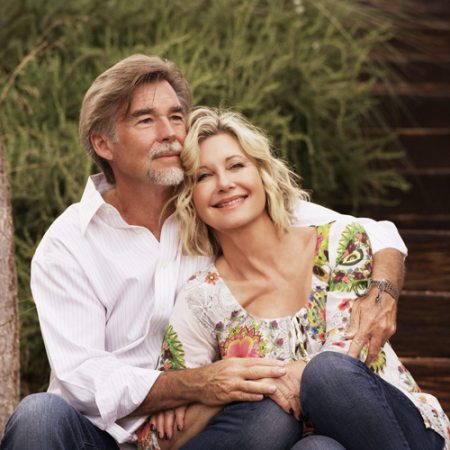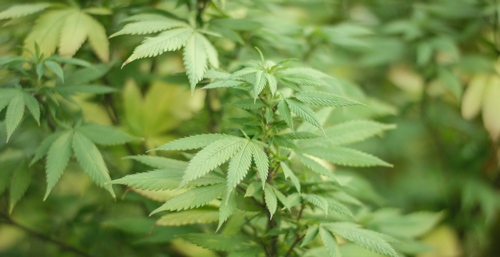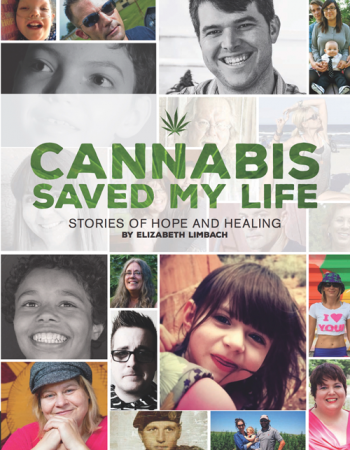Olivia Newton-John has revealed she is using medical cannabis to assist in her second battle with cancer and vows to champion its wider use in Australia.
The 68-year-old spoke for the first time about the importance of medical marijuana in her treatment (and why Australia needs to take California’s lead) during a visit to Melbourne with husband John Easterling for the 2017 Olivia Newton-John Gala in aid of fundraising for her ONJ Cancer Wellness and Research Centre (Friday, September 8).
“It’s an important part of treatment, and it should be available,” the superstar singer told News Corp.
She further revealed to 60 Minutes on Sunday night: “My husband’s a plant medicine man so he grew cannabis for me and made tinctures for me to take for pain and inflammation and so many other things that cannabis can do.”
Olivia learned in May that the breast cancer she successfully fought in the early 1990s had returned and metastasised to her lower back.
She says the natural remedy is working wonders: “I use medicinal cannabis, which is really important for pain and healing. It’s a plant that has been maligned for so long, and has so many abilities to heal.”
Olivia – whose daughter, Chloe Lattanzi, grows the substance on a farm in Oregon – praised California’s steps to legalise cannabis, making obtaining it far easier than Australia.

Her current home of California went a step further in the last election, voting to legalise marijuana for both medical and recreational use.
Olivia pledged to the publication that she’ll do what she can to “champion its use” in Australia.
She acknowledged the Australian government’s legalisation of cannabis for medical use, but knows that widespread implementation is a long way off.
“It’s an important part of treatment, and it should be available,” she said. “I use it for the pain and it’s also a medicinal thing to do — the research shows it’s really helpful.”
When Olivia was newly diagnosed with cancer, her representatives said in a statement: “In addition to natural wellness therapies, Olivia will complete a short course of photon radiation therapy and is confident she will be back later in the year, better than ever, to celebrate her shows.”
She was initially diagnosed with cancer in 1992, undergoing chemotherapy and a partial mastectomy, and subsequently, a breast reconstruction.
CANNABIS: THE NEW $MULTI BILLION WELLNESS INDUSTRY
We want to be clear – SPA+CLINIC is reporting on this global trend, not advocating for or against any aspects of this socially sensitive topic. But as you will read, these sensitivities are rapidly shifting, one region at a time.
North American marijuana sales grew by an unprecedented 30% in 2016 to $6.7 billion as the legal market expands in the US and Canada, according to a report by Arcview Market Research.
North American sales are projected to top $20.2 billion by 2021 assuming a compound annual growth rate of 25%. The report includes Canada for the first time as it moves towards implementing legal adult use marijuana.
To put this in perspective, this industry growth is larger and faster than even the dot-com era. During that time, GDP grew at a blistering pace of 22%. Thirty percent is an astounding number especially when you consider that the industry is in early stages.
According to Spafinder, an expert in global spa and wellness trends, insights and services, between 225-227 million people globally use Cannabis Sativa, with Africa, Oceania, Europe and North America having the highest rates. We present an overview of Spafinder’s report:

The cannabis legality map is a complex patchwork of “green” (indicating those dozen nations where personal and/or medical consumption is either legal or decriminalised (like Canada, Norway, Peru, Portugal, Spain, Switzerland), even more “grey” (nations where it’s technically illegal but tolerated, like across most of Latin America and Europe) and “black” (firmly criminalised, like China).
But blanket prohibition is on the decline. In 23 US states, medical marijuana is now legal, and a continuously expanding number of countries are progressing legalisations of Cannabis Sativa for medical, nutritional or recreational ingestion, smoking or topical application, opening up mega-opportunities in the spa, health, wellness and hospitality/tourism industries.
In Australia we are running behind a number of other markets in legalisation but we need to consider and monitor what is happening elsewhere – because the pressure is mounting.
Cannabis usage decriminalisation and legalisation, particularly for medicinal purposes, is now in constant discussion among our politicians, just as it has been in other similar international communities and markets.
Every week, we read about different national legislatures debating more legalisation – from Austria, to Australia, Colombia and Jamaica (where activist associations list “wellness, travel and spas” as some key markets ripe with opportunity).
And even nations that mete out harsh punishments for possession are investing in the market. In fact, more than half the medical/wellness cannabis patents filed with the World Intellectual Property Office have come from Chinese companies.
So what is happening in the markets where legalisation has already occurred at varying levels?
MEDICINAL USE LEGALISATION
There are 66 unique chemical “cannabanoids” locked within the plant (many with therapeutic uses), even if the world tends to narrowly associate it with just one, Cannibas Sativa with THC, the only component that actually produces a “high.”
In now-legal medical/recreational markets, the way that psychoactive THC is getting delivered is being radically innovated: less healthy “pot smoking” is being replaced with odourless new vaporiser pens (“vapes”), with haute cuisine edibles developed that could grace a Bon Appetit cover.
Non-THC cannabanoids are seeing new applications for pain, anxiety, epilepsy, MS and other neurological disorders and are the key ingredient in more and more topical lotions and beauty products.

Because cannabis has been long criminalised, both medical studies and pharmaceuticals have been held back. However, over 100 trials on medical cannabis exist (the vast majority positive), with the strongest evidence of benefit for nausea, wasting in AIDS and cancer, epileptic seizures, multiple sclerosis, glaucoma and chronic pain.
According to recent articles in Scientific American and Newsweek, there’s new research/interest in how psychoactives like cannabis, and more intense psychedelics like “magic mushrooms,” peyote and LSD, “could revolutionise healthcare”.
In the US, in states where medicinal usage is decriminalised, traditional medical spas have taken up the opportunity with doctors recommending or prescribing medical marijuana.
Both Restorations Wellness Centre and Spa in Denver, Colorado, and MD Medical Spa and Wellness Centre in Boston and Cape Cod, Massachusetts, are using this practice as well as topical cannabis products in spa services. These are doctor-based medical spas with traditional and aesthetic medicine facilities utilising the therapeutic benefits of THC.
On the other hand, business models are exploding that are dedicated to medicinal supply. Because the cannabis supply is so profitable, competitors are offering “added values” to draw business.
The 100,000 customers of Harborside Health Centres in Oakland and San Jose, California, have access to free qi gong, tai chi, yoga, reiki, meditation and TCM, along with chiropractors, naturopaths, hypnotherapists and western herbalists.
Is this then a spa? If not, is it a competitor to spas (with an advantage of being cost-free)?
Medicinal (and recreational) cannabis dispensaries adopting the look and menus of spas and boutique fitness centres is a smart move, reassuring patrons that these are places of safety, community and healing.
THE FUTURE
Perceptions of cannabis – applications for the “whole-plant” and a global wave towards more medical and recreational legalisation – are just at a tipping point.
Legalisation creates boom markets overnight and, in the US, the “wild west” of start-ups (like the internet’s early days), is rushing to create new business models, including tourism, therapeutic products, foods – and, yes, new spa, yoga and wellness “connections”.
This is not just a fleeting trend, it’s one with a long, gradual future.
And when viable national and international markets become a reality, will big pharma and mega-corporations step in and take over?




